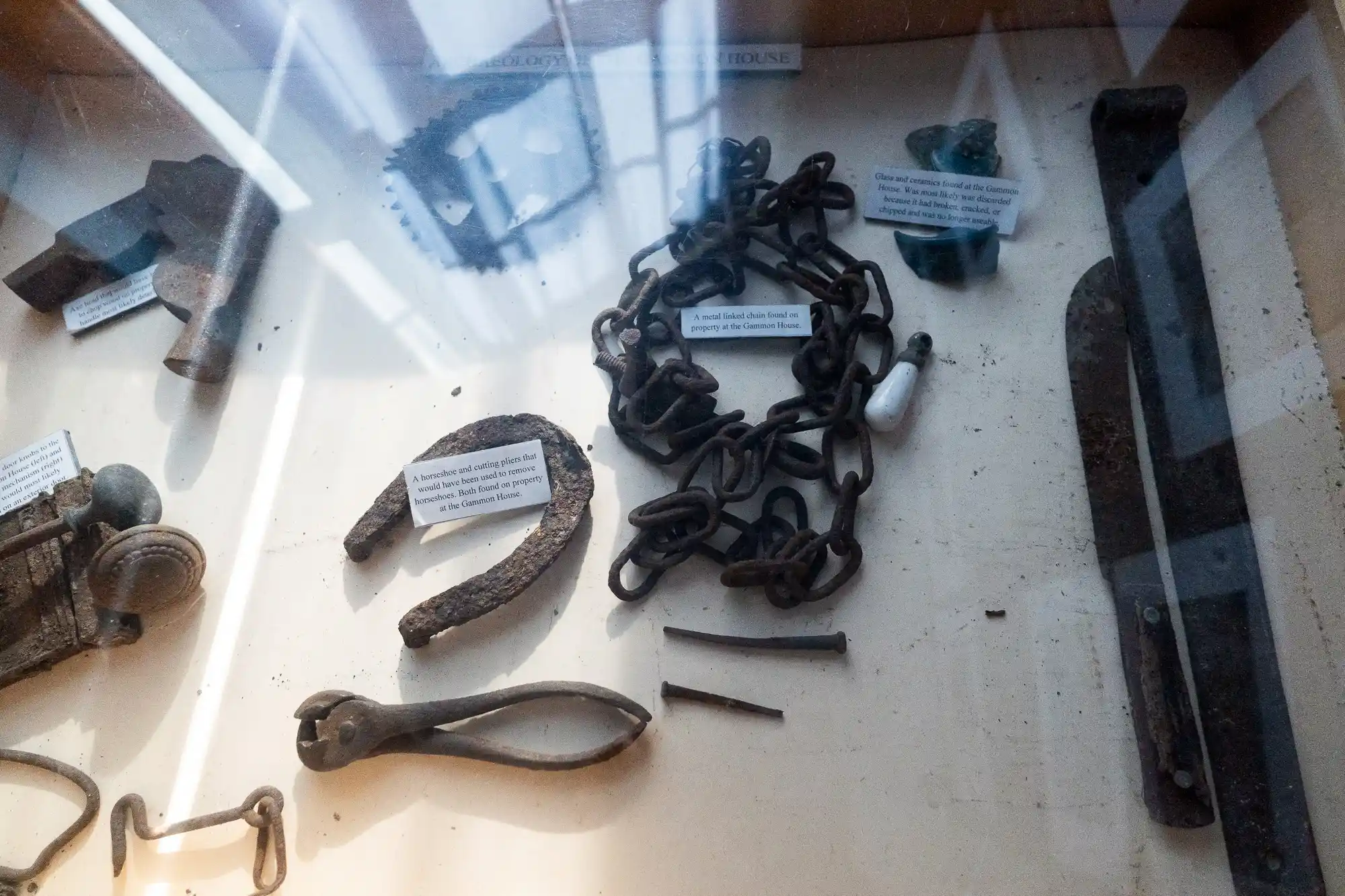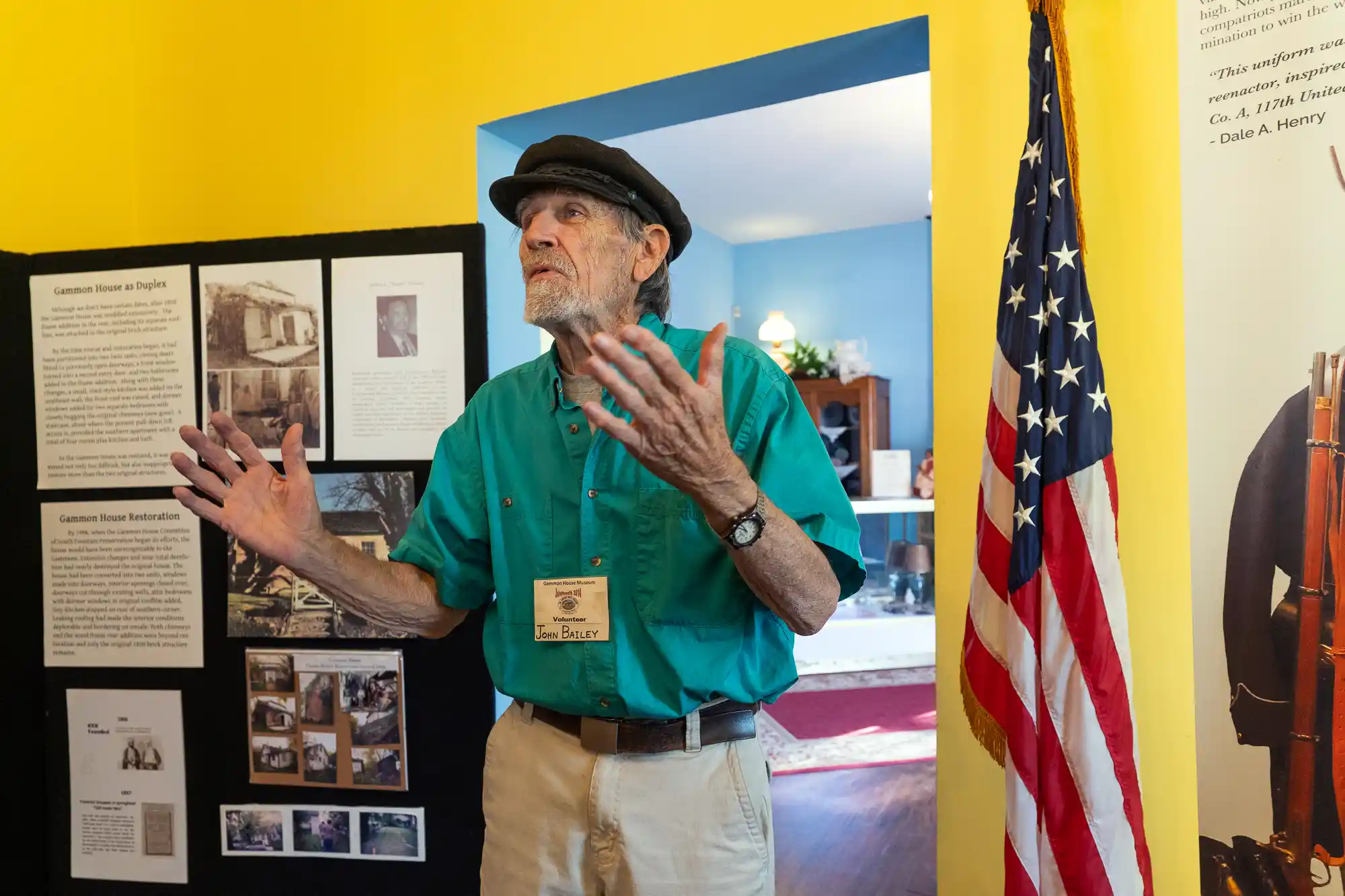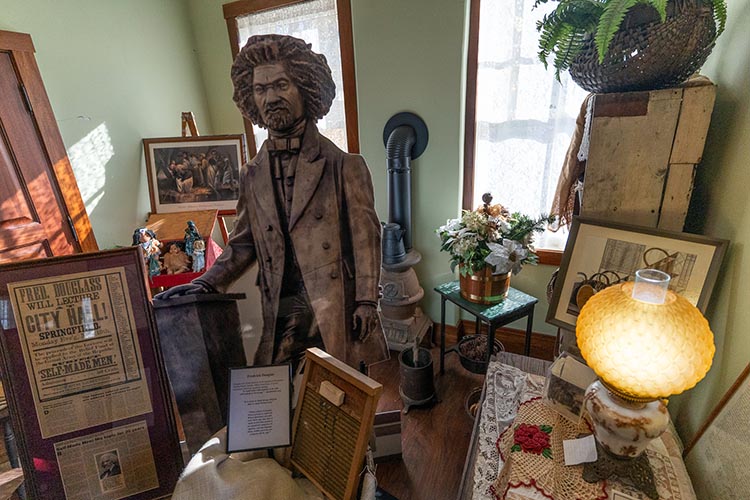Constructed in 1850 by one of Springfield’s freed black families, the Gammon House today commemorates the Underground Railroad, a widespread network of safe houses which delivered escaped slaves to freedom in Canada. We visited to learn a little more about Springfield’s part in this stirring piece of American history.
Table of Contents

A large state found smack between the slave-owning south and Canada, it makes sense that Ohio played an important role in the Underground Railroad. But until visiting the Gammon House, I hadn’t known that Ohio had more “stations” and miles of “track” than any other state.
I put “stations” and “track” in quotes, because the Underground Railroad wasn’t actually a railroad, nor was it underground. The name is a metaphor for the paths and safe houses which transported people northwards, called “underground” only because it operated invisibly. Slaves and collaborators would pass along routes and the locations of safe houses (or “stations”) to each other, never divulging the information to anyone who wasn’t part of the network.

In Springfield alone, there were at least five known stations, and there might have been more; it’s impossible to be certain. In 1850 (the same year in which the Gammon House was built), a law was passed in Ohio making it illegal to harbor fugitive slaves, to the tune of $1000 (about $40,000 today, accounting for inflation). So, anyone who sheltered runaways was running a serious risk. People like the Gammons, who not only opened their home, but sent their youngest son Charles to fight for the Union. Charles died during the assault on James Island, a conflict retold in the 1989 classic Glory.
The Gammon House recounts the stories of George and Sarah Gammon, and the exhibitions go into detail about the slave trade, the tribulations of the enslaved men and women in America’s south, and Ohio’s role in helping liberate them. When we pulled up to the house, I couldn’t believe how small and unassuming it was. But this makes sense, I suppose; a house harboring fugitives hardly wants to call attention to itself. I figured our tour would last 10 minutes, but even the subject matter is so absorbing that we stayed for over an hour.

The Gammon House only opens to visits on the first Saturday of every month, and only from 1 to 3pm. So a visit requires careful planning. All tours are led by a volunteer member of staff, and I can only hope that all of the docents are as engaged, entertaining, and knowledgable as ours turned out to be. We loved our visit to this house, and left with a far greater understanding of the Underground Railroad, and Springfield’s contribution to it.
Gammon House Info
This site contains affiliate links. We may receive a commission if you make a purchase. More Information!
Gammon House Photos
Most images and videos can be licensed for commercial and editorial use, please contact us to find out more.
Gammon House Map
Underground Railroad FAQs
Who operated the Underground Railroad?
A broad assembly of abolitionists, comprising both Black and white members, free and formerly enslaved individuals, Quakers, and other compassionate supporters, joined forces to manage the Underground Railroad. Among the most renowned conductors were Harriet Tubman, William Still, and Levi Coffin.
How did the Underground Railroad work?
Conductors helped runaway slaves move from one safe house to another, usually at night. Those who sheltered the fugitives offered them food, a place to stay, clothing, and direction. They communicated discreetly, often using coded messages or symbols such as quilts and lanterns.
Why was Canada a common destination?
Canada became a favored place to escape to after slavery was abolished in 1834, as it was not subject to U.S. laws like the Fugitive Slave Act that mandated the return of escaped slaves, even from free states.



Leave a Reply